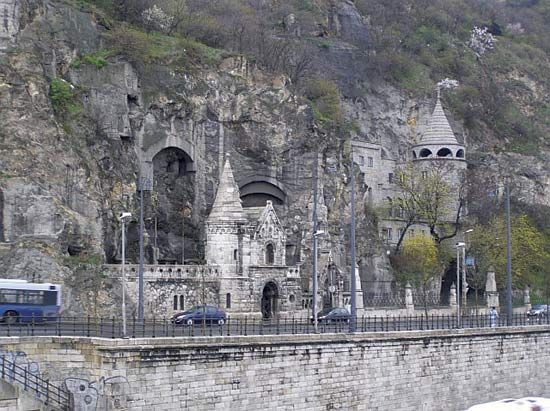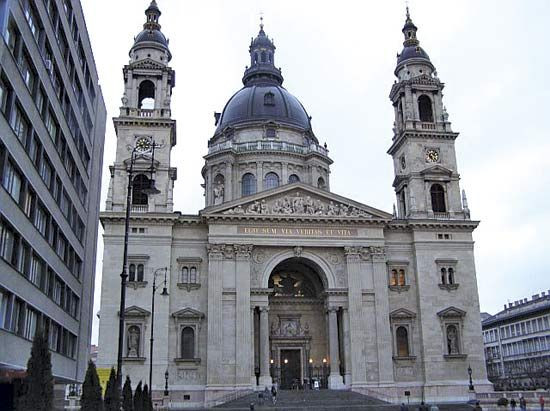Budapest, a city renowned for its thermal springs, vibrant nightlife, and stunning architecture, straddles the majestic Danube River. But Where Is Budapest Located exactly? This captivating capital city is nestled in the heart of Hungary, strategically positioned in Central Europe, making it a pivotal point both geographically and culturally within the continent. Let’s delve into the precise location and layout of Budapest, exploring what makes this city so uniquely situated.
Budapest’s Geographical Location: A Central European Gem
Budapest’s location is fundamental to its identity and history. Situated in Central Europe, Budapest lies in the north-central part of Hungary. Specifically, it’s positioned in the Pannonian Basin, a large basin in Southeast Central Europe. This placement has historically made Budapest a crucial crossroads for trade and cultural exchange between Eastern and Western Europe.
Budapest in Hungary
To pinpoint where Budapest is located within Hungary, look towards the north-central region of the country. It is situated approximately in the middle of Hungary, though slightly tilted towards the northern part of the nation. Budapest’s geographic coordinates are roughly 47.5° North latitude and 19.05° East longitude. The city is the undisputed capital and largest city of Hungary, acting as the nation’s primary political, economic, and cultural hub.
Budapest in Europe and the Danube River
On a broader scale, Budapest is a significant European capital. Its location on the Danube River is perhaps its most defining geographical feature. The Danube, Europe’s second-longest river, flows directly through Budapest, dividing the city into its historic Buda and Pest sides. This riverine location has been vital to Budapest’s development, providing transportation routes, fertile lands, and strategic advantages throughout history.
The Danube connects Budapest to numerous other European countries, flowing from Germany in the west to the Black Sea in the east. This waterway has facilitated Budapest’s role as a bridge between different European regions, contributing to its cosmopolitan character.
Fishermen’s Bastion, statue of St. Stephen, Budapest, offering a panoramic view of the city and the Danube River.
Exploring Budapest’s City Layout: Buda and Pest, Divided by the Danube
Budapest is not just about its continental location; its internal layout is equally fascinating and historically significant. The city is famously divided by the Danube into two distinct parts: Buda and Pest.
Buda: The Historic Hillside
Located on the western bank of the Danube, Buda is characterized by its hills and historical atmosphere. As the original settlement, Buda retains a medieval charm, with cobbled streets and Gothic architecture concentrated in the Castle District. Castle Hill (Várhegy), rising 551 feet above sea level, dominates Buda’s skyline. Crowned by the magnificent Buda Castle (Royal Palace), this hill has been a strategic location since the 13th century. The castle, repeatedly rebuilt and restored, now houses important cultural institutions like the National Széchényi Library, the Budapest History Museum, and the Hungarian National Gallery.
The iconic spire of Matthias Church (Church of Our Blessed Lady) and the fairytale-like Fishermen’s Bastion further enhance Buda’s historical allure, offering breathtaking views over Pest and the Danube. South of Castle Hill, Gellért Hill rises even higher at 771 feet, providing a panoramic vista of the entire city. The Citadel, perched atop Gellért Hill, serves as a historical landmark and offers stunning views, doubling as a venue for St. Stephen’s Day celebrations.
 The Citadel atop Gellért Hill overlooking Budapest
The Citadel atop Gellért Hill overlooking Budapest
The Citadel (Citadella) in Budapest, strategically positioned atop Gellért Hill for commanding views of the city.
Pest: The Dynamic Plain
In contrast to Buda’s hills, Pest, on the eastern bank of the Danube, is largely flat and dynamic. Historically, Pest grew significantly later than Buda, expanding rapidly in the 18th and 19th centuries to become the commercial and administrative heart of Budapest. Belváros (Inner Town), the heart of Pest, is a bustling pentagonal district filled with offices, shops, and cultural institutions. Váci utca, a pedestrian street, is renowned as Budapest’s premier shopping destination.
Pest is also famous for its grand boulevards, particularly Andrássy Avenue, which stretches from the city center to City Park (Városliget). This avenue is lined with significant landmarks, including the State Opera House and the Museum of Fine Arts. City Park itself offers a green oasis with attractions like the Millennium Monument, the Budapest Zoo, and thermal baths. The Parliament Building, a Neo-Gothic masterpiece on the Pest riverfront, stands as a powerful symbol of Budapest.
 The Hungarian Parliament Building in Pest, reflecting Neo-Gothic grandeur on the banks of the Danube
The Hungarian Parliament Building in Pest, reflecting Neo-Gothic grandeur on the banks of the Danube
St. Stephen’s Basilica in Pest, showcasing the eclectic architectural styles of the city.
Conclusion: Budapest – A City Defined by its Location
Understanding where Budapest is located reveals much about its character and importance. Its Central European position in Hungary, bisected by the Danube River and divided into the historic Buda and bustling Pest, has shaped Budapest into the vibrant and culturally rich capital we know today. Whether you are interested in history, architecture, or simply exploring a dynamic European city, Budapest’s unique location and layout offer an unforgettable experience.
